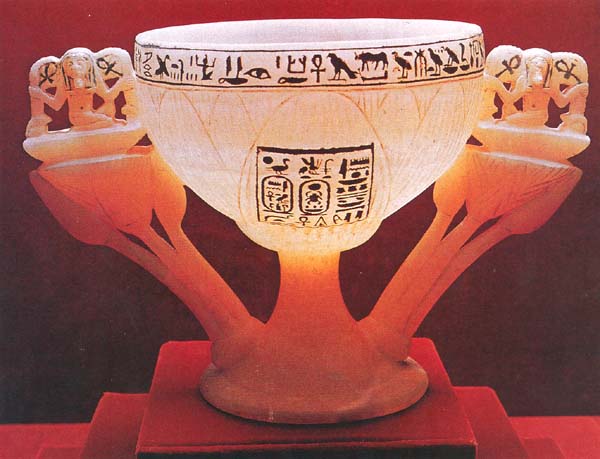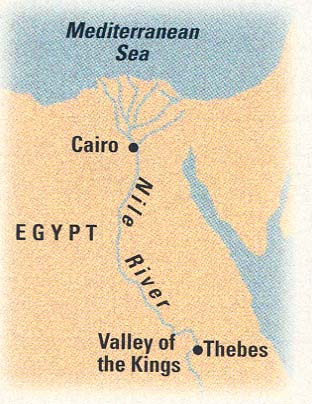
A luminescent lotus blossom forms the bowl of this precious alabaster chalice from the tomb of King Tutankhamun, who ruled Egypt from about 1334 B.C. to 1325 B.C. Tutankhamun’s name appears in the framed inscription at center. The inscription running along the cup’s rim inspired its discoverers to call it the “wishing cup”: “ … May you spend millions of years, you who love Thebes, sitting with your face to the north wind, your two eyes beholding happiness.”

Carved from a single piece of Egyptian alabaster and inlaid with blue pigment, the chalice is more than 7 inches tall and 11 inches wide. Two sculpted lilies, flanked by buds, appear to grow out of its base. Their stems support the cup’s handles, which depict Heh, the god of eternity, holding in each hand a palm branch stripped of its leaves (the hieroglyphic sign for year) resting atop a tadpole (the sign for 100,000). The branch and the tadpole together suggest 100,000 years, expressing the long reign conferred upon the king by the gods.
Already a library member? Log in here.
Institution user? Log in with your IP address.

